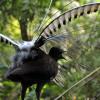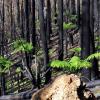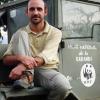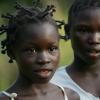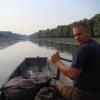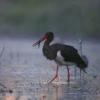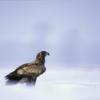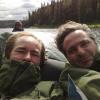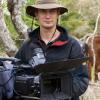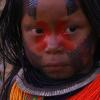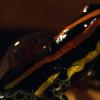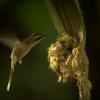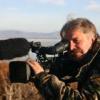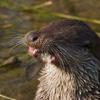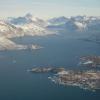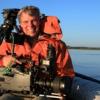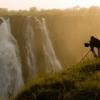On the 7th of February 2009, devastating bushfires tore through Victoria, Australia. Swathes of prime forest were destroyed and wildlife incinerated. But, against all odds, there were survivors of ‘Black Saturday’. Out of the Ashes examines the fires and the ecological recovery over the next 12 months through the first hand experiences of people who were involved. It visually chronicles the regeneration of the native plants and animals - the first new shoots of the eucalypts, the recovery of injured and endangered animals and their release back into the wild. Featuring beautiful cinematography, this is the story of how Nature rises out of the ashes.
Films 2011
First Prize – “Town of Sondrio” 2011
Stelvio National Park Award 2011
Garamba is a mythical Park, one of the oldest in Africa and the first where elephants were tamed. In spite of a glorious past, the Park faces two big challenges in order to assure its future: to eradicate poaching and to make of the Park a tourist destination. Only this way Garamba may survive. Luis Arranz, the Park Director, and his team undertake several projects to reactivate the Park, but in the short term, there are urgent matters to be solved. Owing to poachers activities several elephants are found dead in Garamba. The pursue of the poachers starts.
“Lombardy Region” Award 2011
A Country like no other in Europe, Hungary is influenced by the rhythms of its rivers. White-tailed eagles, otters and enormous catfish share the wetlands with many other species living close to the local people, often unnoticed. The Country’s inhabitants have learnt to cope with alternating floods and droughts. “Wild Hungary” is their story presenting some never-before-filmed animal behaviour like dancing deer or wintering catfish.
Student Jury Award 2011
It looks like a mosaic of water and woodland – Finland, the most eastern part of Scandinavia. Close to the Russian border, Finland is still home to rare animals: bears and wolves roam the swampland, the Siberian flying squirrel lives in old woodpecker nest holes. This film shows animal behaviour that has never been filmed before: the film-makers got the first shots of a lynx in the Finnish wilderness, they did brilliant shots of goldeneye chicks jumping out of their tree nest, they filmed exciting encounters of bears and wolves and much more.
Audience Jury Award 2011
These spectacular mountains in Tuscany were born millions of years ago by a coral reef lifting out of the primitive ocean. Still today, they maintain inseparable relations to the element of water: in all its facets and forms, water surrounds and permeates the steep slopes, thus creating habitats for many different species. Their existence, however, is increasingly threatened by quarrying of the world-famous fine white marble.
The Amazon has long been hailed as a biological treasure trove, but today we are finding out that this is only part of it's remarkable story. As we learn more about how the forest functions, we are gaining greater respect for it's intricate web of life and the people who live, dove-tailed, within it. This part of the series shows that the Amazon is more than biodiversity, it is a network of species, which are interweaved in remarkable ways.
With global warming evident in many places around the world, the forests of North America are in dire trouble. The pine beetle and pine trees have co-evolved together and until the past 2-3 decades the numbers of beetles have been kept in check by cold winters that would kill the beetles, thus limiting their lifespan and ability to reproduce. However, with higher temperatures during the winters, the beetles are surviving in astounding numbers and are killing the forests of the western US and Canada, Today millions of acres of forests and billions of trees are dead and there is no end in sight. Some estimates predict that by 2013, 80% of the North America forests could be gone. In addition, we are losing forests that otherwise provide a carbon sink for our production og greenhouse gases and as the trees die, they emit more carbon dioxide back into the atmosphere.
A hundred years after the climbing and scientific expedition of Duke of the Abruzzi to the Baltoro glacier in Karakorum, a team of scientists and photographers, lead by photographer and alpinist Fabiano Ventura, is following in his footsteps with the aim of carrying out an accurate analysis of the climate change effects and to compile for the first time a visual record of the transformations that have taken place in the Baltoro glacier during the last century. By comparing Vittorio Sella’s and Massimo Terzano’s photographs with those of Fabiano Ventura , as well as through data collection on field and laboratory analysis, the purpose of the mission is to highlight the environmental and glacier changes that have taken place over the last century in the most sensitive and relevant system, that is cryosphere. At present, it is widely recognized at scientific as well as at public level
Wildnis am Strom–Nationalpark Donauauen
Along the Danube, between Vienna and Bratislava, the force of water is still capable of creating previously non-existent habitats: floods create new bluffs; new gravel banks and islands grow out of the current; forests are washed away and created from scratch. This dynamic is a valuable treasure, a living current no longer found anywhere else in Central Europe. The Danube floodplains East of Vienna are home to the last river wilderness.
In Northern New Mexico, a range of mountains rises up from the high desert: a wild, rugged land of the Faraway Nearby. The volcanic Jemez mountains are isolated from all other ranges – an island in the sky, surrounded by a desert sea. In Sky Island, environmental filmmaker John Grabowska profiles this enchanting landscape and our place within it, with dramatic climate change effects already transforming the desert and alpine ecosystems.
Huge glaciers, icebergs swimming in the sea and northern lights: Greenland is the largest island in the world with a heart of ice. Greenland’s ice cap is 1,7 millions square km in size and up to three km thick – huge ice cube that rules weather, climate and living conditions of flora and fauna. The film shows how animals make their life in Greenland’s extraordinary environment. The Northeast Greenland National Park is the largest National Park in the world, empire of polar bear, musk ox and walrus. Millions of little auks breed on Greenland’s coastlines every year – a unique wonder of nature.
400 kilometres of steep mountains slopes, fertile forests, amazing waterfalls and turquoise tarns – this are the Pyrenees. This mountain range connects Atlantic Ocean and Mediterranean Sea. An untamed landscape is the home of a countless number of wild plants and animals till our days. The soft Mediterranean climate influence is the origin of an especially colourful floral life on the mountain pastures and a rich biodiversity.
It is one of the least known rivers on earth, yet it flows for nearly 2,600 kilometres through six Countries. This is the story of the fourth longest river in Africa, from its source in the uplands of Zambia to its vast delta in Mozambique where it empties into the Indian Ocean. The Zambezi changes mood many times, sometimes placid, opening out into vast open floodplains, then changing into a raging torrent, tearing through narrow rock gorges, then once again slowing, becoming deceptively placid before thundering into the famous mighty Victoria Falls. Filmed throughout the changing seasons, the story of the Zambezi is one of constant change, of life and death, it is the story of Africa itself.
Vuoi far parte della Giuria del Pubblico di Sondrio Festival?
Stiamo selezionando la Giuria del Pubblico di Sondrio Festival 2025.
Se sei interessato a farne parte invia la tua candidatura via e-mail a
info@sondriofestival.it.

